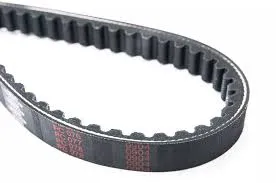- Arabic
- French
- Russian
- Spanish
- Portuguese
- Turkish
- Armenian
- English
- Albanian
- Amharic
- Azerbaijani
- Basque
- Belarusian
- Bengali
- Bosnian
- Bulgarian
- Catalan
- Cebuano
- Corsican
- Croatian
- Czech
- Danish
- Dutch
- Afrikaans
- Esperanto
- Estonian
- Finnish
- Frisian
- Galician
- Georgian
- German
- Greek
- Gujarati
- Haitian Creole
- hausa
- hawaiian
- Hebrew
- Hindi
- Miao
- Hungarian
- Icelandic
- igbo
- Indonesian
- irish
- Italian
- Japanese
- Javanese
- Kannada
- kazakh
- Khmer
- Rwandese
- Korean
- Kurdish
- Kyrgyz
- Lao
- Latin
- Latvian
- Lithuanian
- Luxembourgish
- Macedonian
- Malgashi
- Malay
- Malayalam
- Maltese
- Maori
- Marathi
- Mongolian
- Myanmar
- Nepali
- Norwegian
- Norwegian
- Occitan
- Pashto
- Persian
- Polish
- Punjabi
- Romanian
- Samoan
- Scottish Gaelic
- Serbian
- Sesotho
- Shona
- Sindhi
- Sinhala
- Slovak
- Slovenian
- Somali
- Sundanese
- Swahili
- Swedish
- Tagalog
- Tajik
- Tamil
- Tatar
- Telugu
- Thai
- Turkmen
- Ukrainian
- Urdu
- Uighur
- Uzbek
- Vietnamese
- Welsh
- Bantu
- Yiddish
- Yoruba
- Zulu
stu . 09, 2024 21:08 Back to list
Understanding the Differences Between Timing Belts and Timing Chains in Engines
Understanding Timing Belts and Timing Chains A Comprehensive Overview
When it comes to the internal workings of an automobile engine, the timing system plays a crucial role in ensuring that the engine operates smoothly and efficiently. Among the essential components of this system are the timing belt and timing chain, both of which are designed to synchronize the rotation of the crankshaft and camshaft. Understanding the differences, benefits, and maintenance requirements of these two components can help vehicle owners make informed decisions about their engine health.
Timing Belts
A timing belt is a flexible, toothed belt made from a combination of rubber and fibers. It is responsible for transmitting power between the crankshaft and camshaft, which controls the opening and closing of the engine's valves. Timing belts are commonly found in many contemporary engines due to their quiet operation and lightweight nature.
One of the primary advantages of timing belts is their relatively low cost. They are cheaper to manufacture than timing chains, which makes them a popular choice for many automotive manufacturers. Additionally, timing belts operate more quietly and can help in reducing engine noise, providing a more pleasant driving experience.
However, timing belts come with some challenges. Most notably, they have a limited lifespan, typically requiring replacement every 60,000 to 100,000 miles, depending on the manufacturer’s recommendations. A failed timing belt can lead to significant engine damage, especially in interference engines where the pistons can collide with the open valves if the belt breaks.
Timing Chains
In contrast to timing belts, timing chains are made of metal and designed to last much longer. They function similarly by connecting the crankshaft and camshaft, but their durable construction allows them to endure higher levels of stress and friction. Typically, timing chains are used in heavier-duty engines, where longevity and performance are prioritized.
timing belt timing chain

One of the biggest advantages of timing chains over belts is their lifespan. Timing chains can often last the lifetime of the vehicle, requiring less frequent replacements – although they may still require maintenance and occasional replacement due to wear or stretching. This durability can translate to long-term cost savings for car owners.
However, timing chains can be noisier than belts, leading to an increase in engine noise, which some drivers may find undesirable. Additionally, the complexity of timing chains can complicate repairs and replacements, potentially leading to higher labor costs if any issues arise.
Comparison and Maintenance
When comparing timing belts and chains, it is essential to consider the specific requirements of your vehicle and your driving habits. Timing belts are typically found in smaller cars and those focusing on fuel efficiency, while timing chains are more common in larger vehicles and those with high-performance engines.
Regular maintenance is crucial for both timing belts and chains. For belts, adhere strictly to the manufacturer’s recommended replacement intervals to prevent sudden failures. Visual inspections for signs of wear, such as cracks, fraying, or missing teeth, should also be part of routine vehicle maintenance.
For timing chains, while they are designed to be more durable, regular oil changes are essential for their longevity. Proper lubrication helps reduce wear and prevent issues such as stretching or breaking. Listening for unusual sounds or engine misfires can serve as indicators of potential problems with either system.
Conclusion
In conclusion, both timing belts and timing chains serve essential functions in the operation of an engine, each with its unique advantages and drawbacks. Understanding these differences empowers vehicle owners to make informed choices about their maintenance practices and helps in anticipating service needs. Whether your vehicle is equipped with a timing belt or a timing chain, regular maintenance is key to ensuring a healthy engine and providing peace of mind on the road. By staying informed, drivers can keep their engines running smoothly for years to come.
-
Korean Auto Parts Timing Belt 24312-37500 For Hyundai/Kia
NewsMar.07,2025
-
7PK2300 90916-T2024 RIBBED BELT POLY V BELT PK BELT
NewsMar.07,2025
-
Chinese Auto Belt Factory 310-2M-22 For BMW/Mercedes-Benz
NewsMar.07,2025
-
Chinese Auto Belt Factory 310-2M-22 For BMW/Mercedes-Benz
NewsMar.07,2025
-
90916-02660 PK Belt 6PK1680 For Toyota
NewsMar.07,2025
-
drive belt serpentine belt
NewsMar.07,2025

